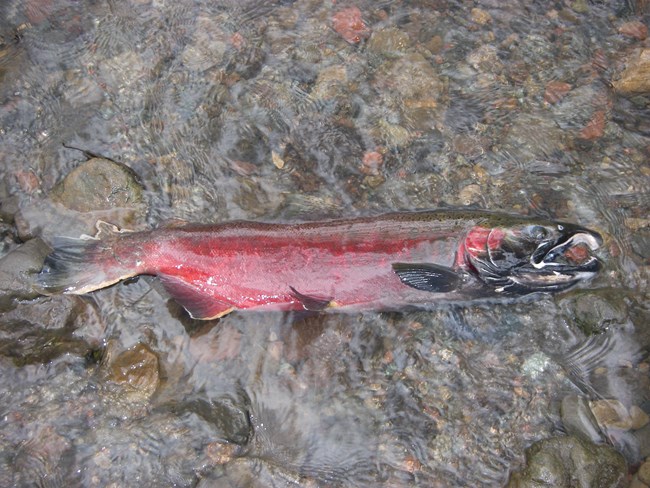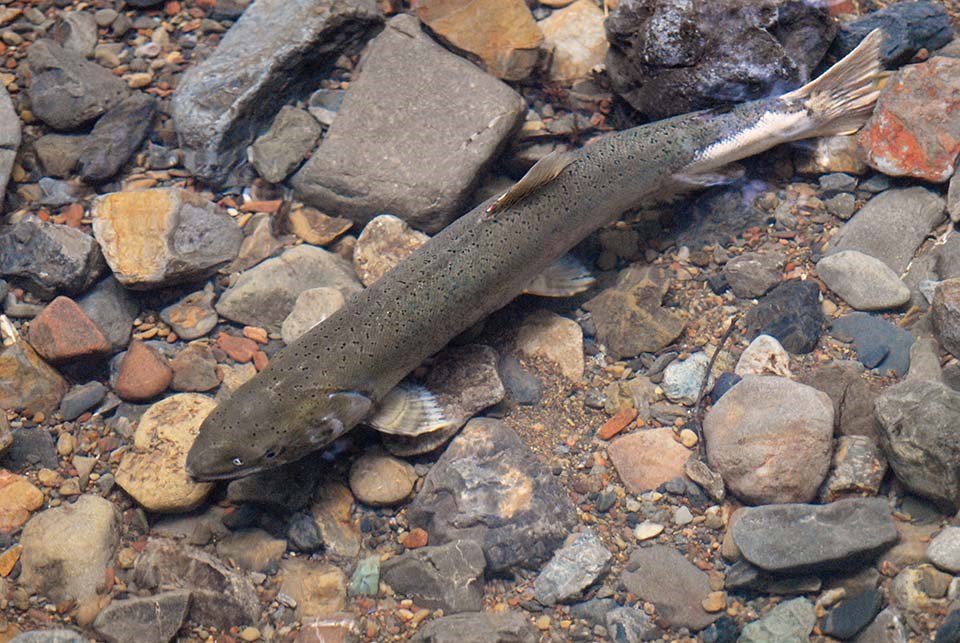Last updated: August 5, 2024
Article
Frequently Asked Coho Salmon Questions
If coho salmon are endangered, why do I see them for sale in the seafood section of the grocery store?
Coho in the grocery store are probably from Alaska or the Pacific Northwest. Salmon are very geographically loyal, returning as adults to the same stream they were born. So coho caught farther north are not from the same population of fish that live in our San Francisco Bay Area streams.
Alaskan coho salmon are thriving, in part because the fishery is well managed and monitored, but also because their freshwater habitats are in a much more pristine condition, having escaped the damming, pollution, and development that have degraded Bay Area watersheds over the years.
With all the different kinds of salmon out there (coho, steelhead, king, sockeye, and pink to name a few) and also varying harvest methods it can be difficult to know what to avoid and what to eat. For more information about sustainable seafood choices see seafoodwatch.org.

NPS / Casey Del Real
What happens to the salmon carcasses?
Salmon carcasses provide important marine derived nutrients for a number of organisms in Redwood Creek. Salmon carcasses will either decompose in the stream or be consumed by scavengers. These nutrients may be spread to areas outside of the creek by scavengers. Salmon carcasses also provide food for fry as they emerge from the gravels.
Why do the coho salmon die after spawning?
Coho salmon are semelparous, meaning they produce offspring only once, and then die after reproduction. Their upstream spawning migration takes a heavy toll on their body due to both physical exertion and the severe change from saltwater to freshwater conditions.
How far do the salmon on Redwood Creek go upstream?
The upstream extent for coho salmon on Redwood Creek is approximately 8.0 kilometers from the confluence with the Pacific Ocean. The upstream extent is designated by a cascade in Mt Tamalpais State Park adjacent to the Bootjack hiking trail. They are also found in some of the primary tributaries, including Fern and Kent Creek.

NPS / Jessica Weinberg McClosky
How do you tell a male from a female adult coho?
Both physical and behavioral characteristics may be used to differentiate between the sexes in coho salmon. Males are typically dark in color with a strongly hooked jaw and slightly humped back. When holding in pools they will often chase after other males in the pool. Typically, the back of the males are eroded from fighting behavior, leaving a distinct worn area down below the dorsal fin. When spawning with females, males tend to swim directly downstream of the female. Females are typically lighter in color with a slightly hooked jaw. Females can usually be observed cutting (laying on their side to fanning the gravel with their tail) at the head of riffles in order to prepare the spawning bed or to clean gravels for eggs that have already been deposited. Females usually develop an eroded underside and tail due to digging in the stream gravels.
Do the adult salmon have any potential predators as they migrate upstream?
The primary predators of the spawning salmon are river otters and raccoons. Other potential impacts including low flow, physical barriers, and warm water temperatures may also impede the ability of adult salmon to reach spawning habitat.

NPS / Jessica Weinberg McClosky
What fish other than coho salmon are in Redwood Creek?
Steelhead trout, sculpin and stickleback are also fish that inhabit Redwood Creek. Like coho, steelhead are also anadromous and return to Redwood Creek to spawn after living in the ocean for at least one year. Unlike coho, steelhead are iteroparous, meaning they may reproduce in successive winters. Steelhead can return to the ocean after spawning and comeback in subsequent years to spawn. Sculpin are ambush predatory fish that conceal themselves in the gravel. Sculpin usually have dark mottling and are hard to see from above the surface of the water. Stickleback are a small fish that are silver in color. These fish have erect spines along their back to make them less than ideal prey.
For more information
- San Francisco Bay Area Network Salmonid Monitoring webpage
- Pacific Coast Science & Learning Center Coho & Steelhead webpage
- Contact Michael Reichmuth, Fisheries Biologist: Michael_Reichmuth@nps.gov; 415-464-5191.
Prepared by the San Francisco Bay Area Network Inventory & Monitoring Program, 2005.
